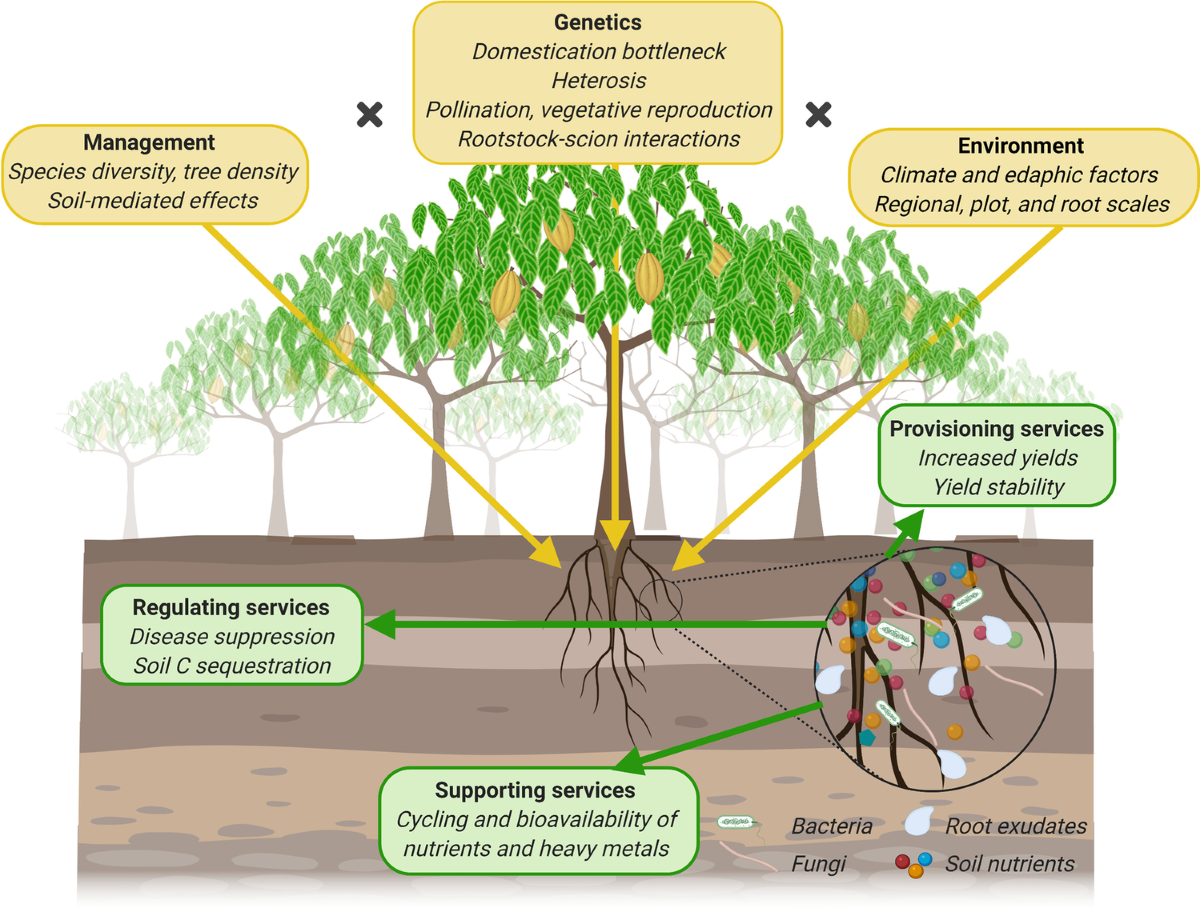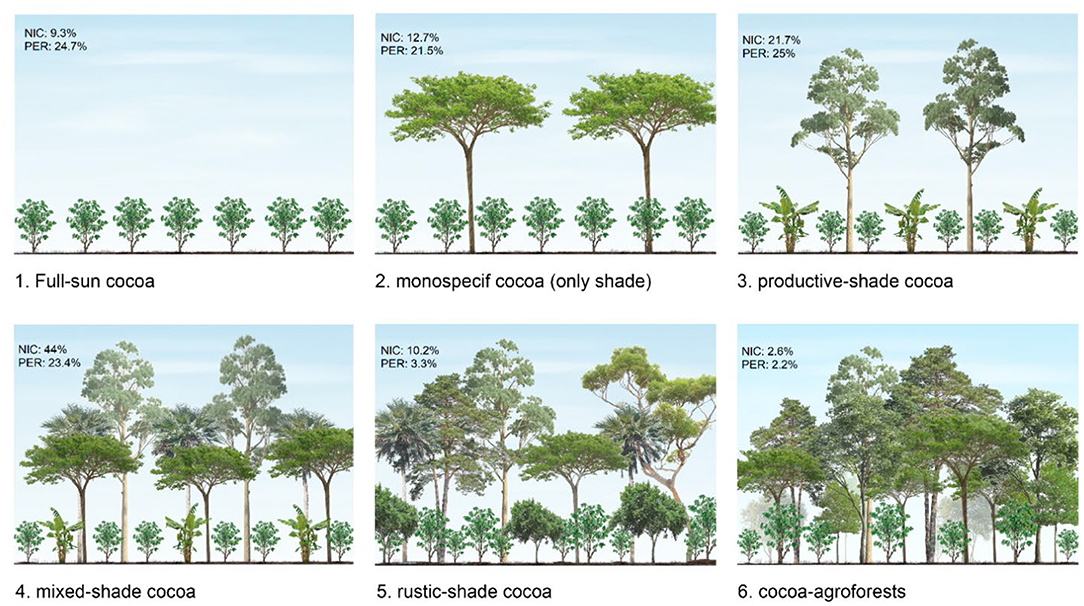How Soil Type and Climate Affect Chocolate Tree Growth?
Environmental factors such as soil type and climate significantly influence the growth of chocolate trees, primarily Theobroma cacao, through their effects on microclimate, nutrient availability, and water management.

Soil Type
The suitability of soil for cocoa cultivation is critical. Cocoa trees thrive in well-drained, fertile soils with a pH level ideally between 5.0 and 7.0. Soils that are too acidic or have high clay content can hinder root development and nutrient uptake, leading to poor plant growth. Additionally, soil organic matter plays a crucial role in maintaining soil fertility and moisture retention, which are vital for cocoa tree health.
Agroforestry practices, which involve planting cocoa alongside other species, can enhance soil quality by increasing organic matter and nutrient cycling. For instance, certain companion plants can help balance soil pH and improve overall fertility, creating a more conducive environment for cocoa trees.
Climate

Cocoa trees require specific climatic conditions to flourish. They thrive in humid tropical climates with high rainfall (ideally between 1,500 to 2,500 mm annually) and temperatures ranging from 20°C to 30°C. Excessive sunlight can be detrimental, making shade from other trees essential to protect cocoa trees from heat stress and wind damage.
The presence of shade trees in agroforestry systems can create a favorable microclimate, reducing temperature extremes and maintaining humidity levels that are beneficial for cocoa growth. However, the density and species of shade trees must be carefully managed, as too much competition for resources can negatively impact cocoa yields.
Moreover, climate change poses a significant threat to cocoa production, with altered precipitation patterns and increased temperatures affecting water availability and tree resilience. Cocoa farms are particularly vulnerable to drought, which can drastically reduce yields.
Conclusion
In summary, the growth of chocolate trees is intricately linked to environmental factors such as soil type and climate. Sustainable practices, including agroforestry, can mitigate some of the adverse effects of these factors by improving soil health and creating a supportive microclimate. As the cocoa industry faces challenges from climate change, understanding and optimizing these environmental conditions will be crucial for maintaining cocoa production.
Citations:
Agroforestry and Climate Change Mitigation in Cocoa Production
Agroforestry Systems in Cocoa Production: A Review
Agroforestry is the Solution to Cocoa’s Climate Crisis
Impacts of Cocoa Agroforestry Systems on Climate
Agroforestry Systems in Cocoa Production: Soil and Water Management
Agroforestry and Climate Change Mitigation in Cocoa Production
comments powered by Disqus